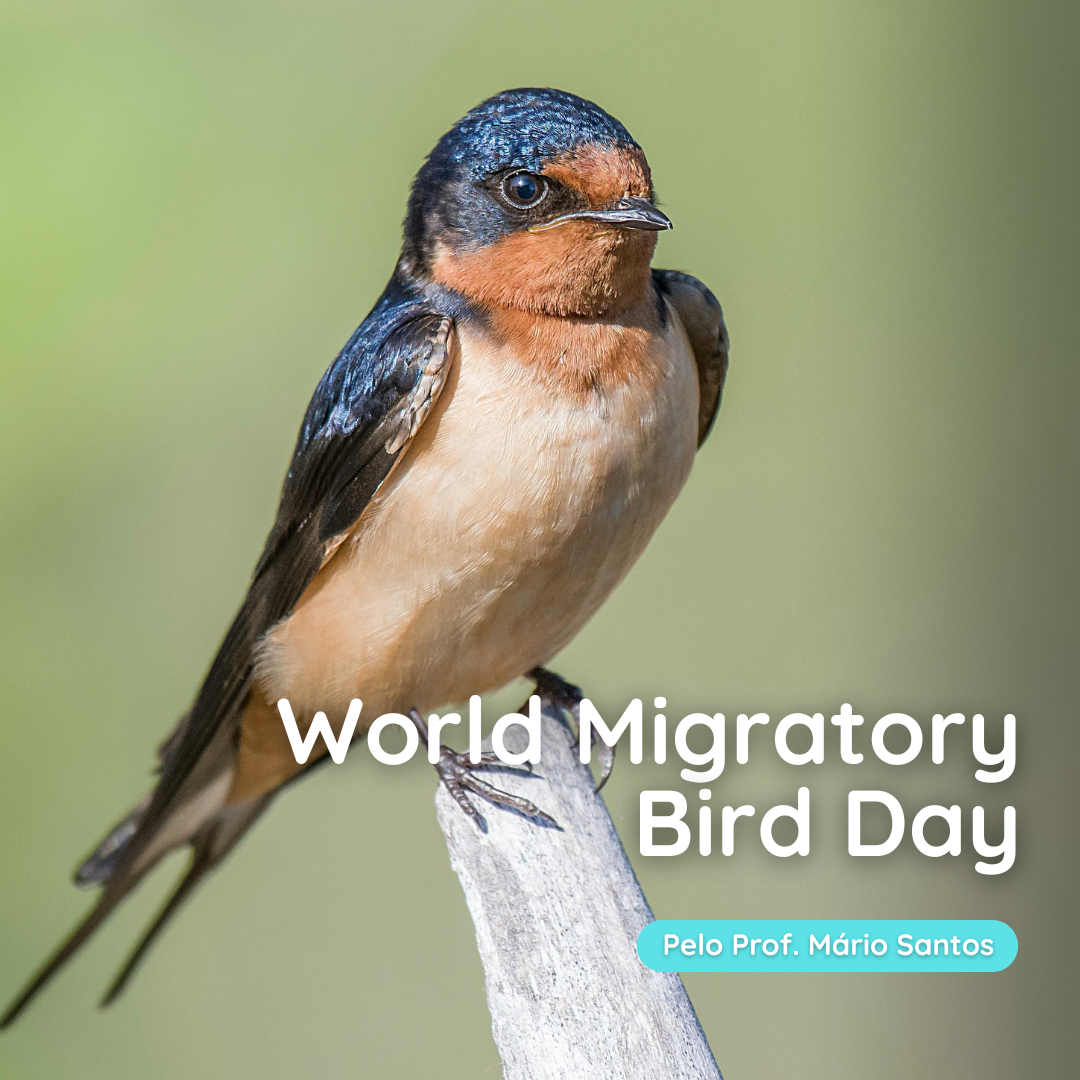World Migratory Bird Day
One swallow does not make a spring, but what would spring be without swallows?

World Migratory Bird Day is celebrated on the second Saturday in May and the second Saturday in October, in order to include the diversity of species that travel between their breeding grounds and wintering grounds, generally associated with spring and autumn, but also with the seasons of the different hemispheres of our planet.
Among the species we most identify with migration are undoubtedly swallows, particularly the barn swallow, which is relatively common in our country between late winter and autumn. This swallow chooses to nest under the eaves of houses and stables in agricultural regions, spending the winter on the African continent. However, many people are unaware that there is not just one, but several species of swallows in our country (and swifts, which are relatively similar in habits and general body shape, but very distant in evolutionary terms). Among the swallows, five species are regularly present in our country and among the swifts another six, all specialised in catching flying insects in different habitats and at different altitudes.
The services that swallows and swifts provide to our society are countless, namely because they control the populations of many insects that transmit diseases to humans and domestic animals, but also because they consume many pests of agricultural, forest and ornamental plants. Their tolerance of human presence makes these species ideal for environmental education, nature conservation and even citizen science initiatives. Their flight, vocalisations and colours also bring beauty and charm to the long days of summer. Although they are birds that are usually found close to us, their complex lives, divided between different worlds - continents and habitats - are still largely unknown.
The populations of many species of swallows and swifts have been declining sharply in recent years as a result of changes in the landscape and land use, such as the massive application of pesticides and the lack of diversity and specialisation in landscapes, which have contributed to the widespread decline in insect diversity.
The populations of many species, including swallows and swifts, have been declining sharply in recent years as a result of changes in the landscape and land use, such as the widespread use of pesticides and the creation of less diverse and specialised landscapes, which have contributed to a general decline in insect diversity. In addition, current materials, architecture and construction methods do not allow many species to continue to use our buildings as breeding sites. As most swallows and swifts occur in many habitats and locations on different continents during migration and wintering, they can also be considered global indicators of environmental quality, with their decline reflecting the state of our planet's "health".
One swallow does not make a spring, but what would spring be without swallows (and swifts)?
P.S. For readers who are curious, or who wish to help in the research and conservation of these species, I invite you to visit the interesting Andorin project, run by the VitaNativa association.
Start date: Saturday, 11th October 2025
End date: Saturday, 11th October 2025